When we look at the Hisense E7NQ PRO in everyday use, it is immediately clear that this television is designed for a wide audience. Although the image doesn't blow you away at first glance, it improves significantly after proper calibration. The colours appear more natural, and a brightness of around 500 cd/m² makes it comfortable to watch even in a sunny living room. The wide viewing angles offered by the IPS panel are an added bonus – we no longer have to fight for the best spot on the sofa. Dolby Vision can enhance the overall experience, and in SDR mode, the TV delivers a pleasant picture. Sports and gaming fans will find even more reasons to be satisfied. The high refresh rate (144 Hz) guarantees smooth ball movements on the field, and low latency, VRR, ALLM, and compatibility with G-Sync and Dolby Vision in games cater to those who value responsiveness and immersive gaming experiences. Because of all this, E7NQ PRO has become an interesting option for PC gamers. The VIDAA system works smoothly with plenty of apps, although it lacks typical music platforms like Spotify or Tidal. However, one can count on recording, AirPlay, mirroring, and decent compatibility with wireless devices. Admittedly, there are some shortcomings and flaws – especially concerning subtitle support from USB or perfect brightness and contrast management, and the absence of HGIG may disappoint the most demanding gamers. When we gather all the impressions and experiences, E7NQ PRO emerges as a device that works well in many situations. It has its advantages – including wide viewing angles, pleasant picture after calibration, plenty of additional features, and excellent motion fluidity in sports or games. At the same time, it should be remembered that this is not a television intended for those looking for perfect experiences during evening screenings in complete darkness. In low light, the shortcomings in contrast and black levels become more apparent, so we suggest that those planning mainly evening screenings look for alternatives among competitors. Nevertheless, as a universal solution for everyday use – from watching TV in a bright living room to playing console and computer games – E7NQ PRO performs really well.
- Matching (Score)
- Our verdict
- TV appearance
- Where to buy
- Contrast and black detail
- HDR effect quality
- Factory color reproduction
- Color reproduction after calibration
- Smoothness of tonal transitions
- Image scaling and smoothness of tonal transitions
- Blur and motion smoothness
- Console compatibility and gaming features
- Input lag
- Compatibility with PC
- Viewing angles
- Daytime performance
- Panel details
- TV features
- Apps
- Playing files from USB
- Sound
Hisense E7NQ PRO vs Panasonic W85
Direct comparison

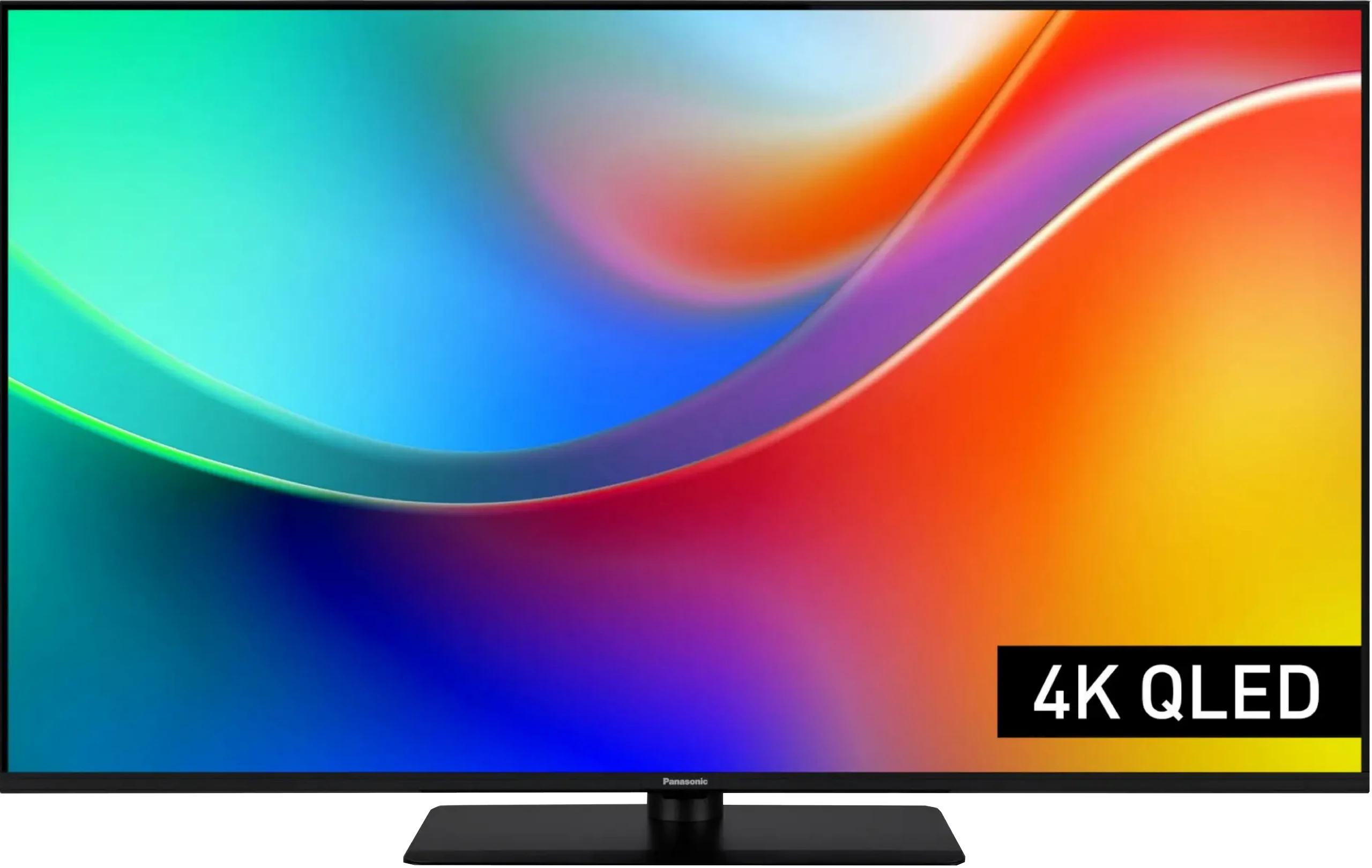
Panel type: LCD IPS
Resolution: 3840x2160
System: VIDAA
Model year: 2024
Complete the survey to find out the result

Panel type: LCD VA
Resolution: 3840x2160
System: Amazon FireTV
Model year: 2025
Complete the survey to find out the result

Overall rating
7.0
6.1
Movies and series in UHD quality
6.4
5.5
Classic TV, YouTube
6.3
5.8
Sports broadcasts (TV and apps)
6.6
5.8
Gaming on console
8.0
7.7
TV as a computer monitor
7.6
8.6
Watching in bright light
6.2
4.2
Utility functions
8.9
6.8
Apps
7.7
7.6
Sound quality
7.0
5.8
Complete the survey to find out what fits your preferences
Advantages
Wide viewing angles thanks to the IPS matrix
Good color potential after calibration
High refresh rate (144 Hz), VRR, ALLM, and G-Sync for gamers
Support for Dolby Vision
A considerable number of additional features (recording, AirPlay, mirroring)
Support for major audio formats (Dolby Atmos, DTS:X)
Relatively low input lag
VA matrix with high native contrast
High refresh rate 120/144 Hz
Two HDMI 2.1 ports supporting ALLM, VRR, and Dolby Vision in games
Very low input lag
Quite good color gamut coverage thanks to the QLED filter
Support for multiple HDR formats including Dolby Vision and HDR10+
Sturdy central base
Great compatibility with PC – full 4:4:4 chroma, readable fonts
Disadvantages
Average contrast and black
Problems with subtitle playback from USB
No support for HGIG
Brightness management issues in HDR in some scenes
Unavailability of some popular music apps (Spotify, Tidal)
Low brightness (below 270 nits) – no real HDR
HDR mode in games is poorly developed, with incorrect HGiG implementation
Weak media file player
The FireTV system in Europe is poorly developed: there are micro stutters and awkward translations, and many apps are missing
Average sound quality, lacking depth
Motion smoothing doesn't want to work
Our verdict
The Panasonic W85B is a TV that aims to prove that the Japanese brand can produce not only top-tier devices but also something more "for the people." And it really does look decent on paper: a VA panel with solid contrast, high refresh rates of 120/144 Hz, two full HDMI 2.1 ports, and low input lag. It sounds like a great setup for a gamer or someone just looking for an affordable TV with good fundamentals. However, the reality is a bit more complicated. The W85B performs well mainly with SDR content, especially after calibration, and will serve well for typical everyday use. But when we start expecting more from it—for example, counting on strong HDR performance or greater immersion in games with that mode activated—the TV quickly shows its limitations. Its brightness is low and the lack of local dimming becomes quite noticeable during evening viewing. Therefore, we view the W85B more as a "daily" TV—ideal for someone who watches terrestrial television, YouTube, or SDR streaming, and wants to connect a console or PC for 120/144 Hz (but without HDR). In that role, it performs very well. Is it a TV for everyone? Definitely not. But if we accept its limitations and approach it with reasonable expectations, the W85B can provide a lot of enjoyment for a relatively sensible price.
TV appearance




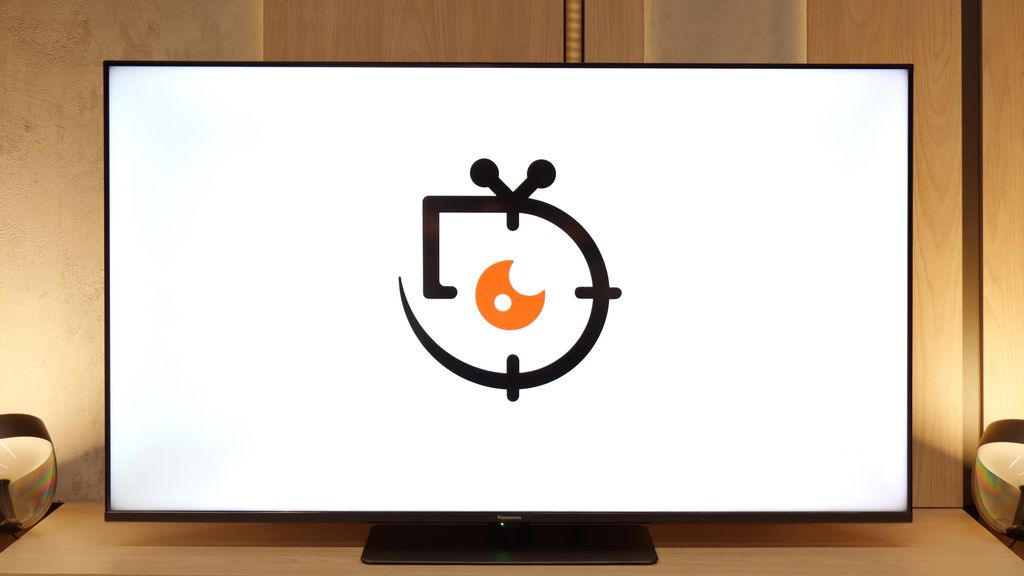
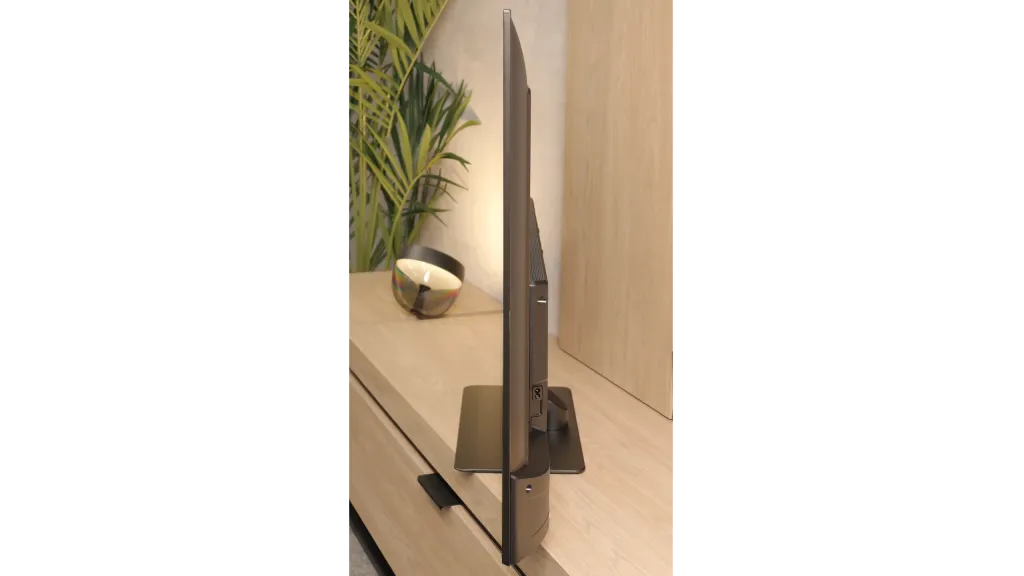

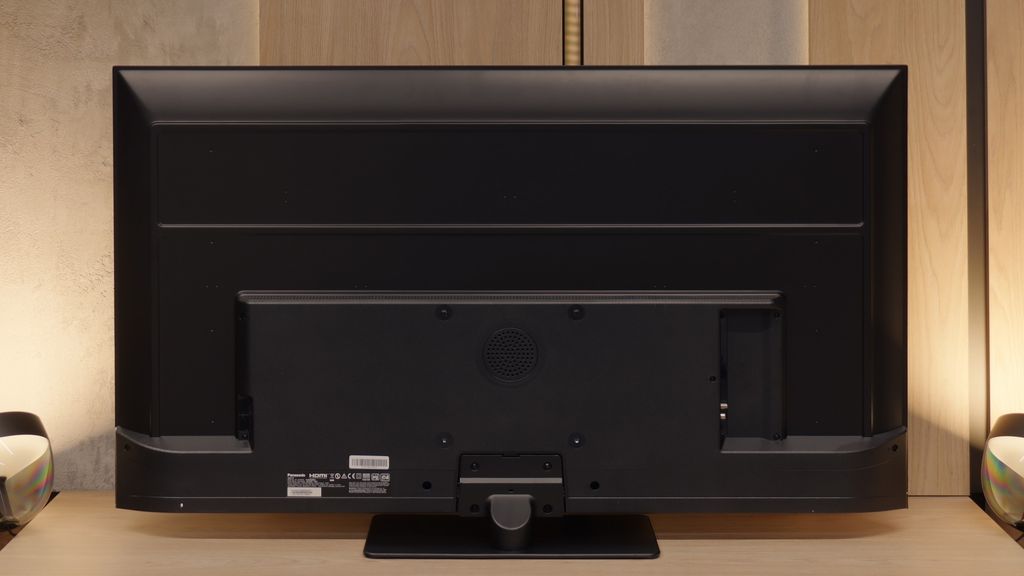
Contrast and black detail
5/10
5.3/10
Local dimming function: Yes, number of zones: 32 (4 x 8)
Local dimming function: No
Contrast:

Result
7,850:1

Result
4,150:1

Result
4,400:1

Result
2,500:1

Result
1,550:1

Result
4,300:1

Result
4,250:1

Result
4,200:1

Result
4,400:1

Result
3,150:1
Halo effect and black detail visibility:

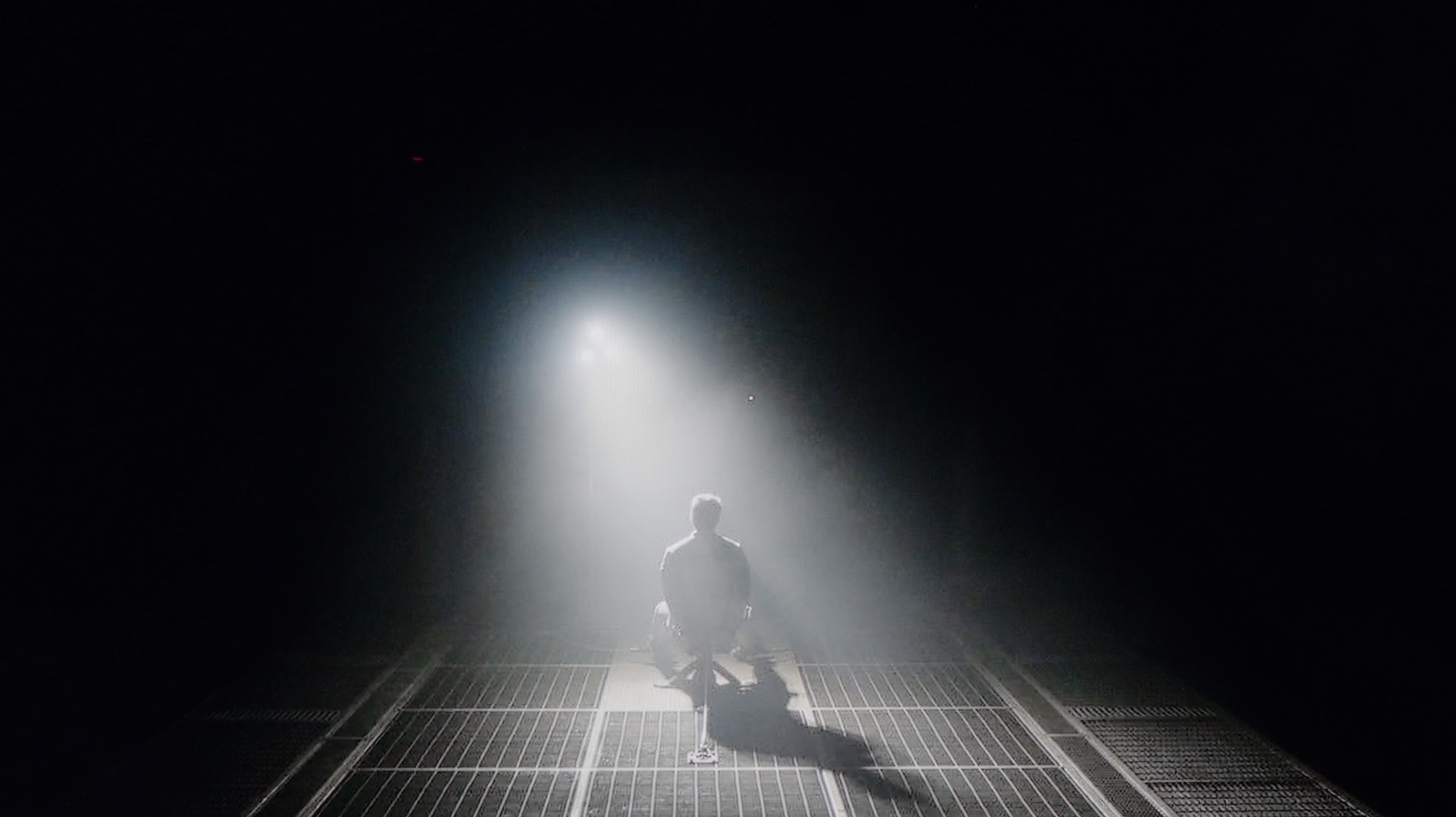
The tested Hisense E7NQ PRO in the 65-inch version uses an IPS panel, which unfortunately is not known for high contrast. As a result, blacks appear slightly "washed out" and occasionally take on a silvery hue, which is clearly visible in our photos. The manufacturer addressed this by equipping the TV with local dimming functionality. Unfortunately, in this 65-inch model, we only have 32 zones available, which, although it helps a little, is not enough to achieve truly impressive results, especially since the panel itself cannot provide a high-depth deep black. During testing, we observed highly varied results. In optimal conditions, we managed to reach around 7800:1, which can be considered decent, but in more challenging scenes, the contrast dropped to around 2000:1. Such values are at best average and do not befit a TV in this price range. Ultimately, although local dimming somewhat salvages the situation, there is a lack of truly deep, inky blacks and contrast that would leave a greater impression on us.
The W85B is Panasonic's entry-level LCD, so one shouldn't expect miracles in this category, but... the VA panel really does a great job here. Its biggest advantage is simply better contrast than in popular IPS panels – blacks often look gray there, while here you can actually see deeper tones. In the scenes we tested, the contrast held around 4000:1, which translates to roughly four times better performance than in IPS panels. Of course, there's no local dimming, so in difficult conditions, when it gets really dark in the room, black can resemble navy more than absolute pitch black. This is the difference you can see compared to OLEDs or Mini-LEDs. But in everyday viewing – a series, a match, a movie in the evening in the living room – this contrast is more than sufficient. The image has the right depth, and the W85B doesn't give the feeling of a "washed-out" television.
HDR effect quality
5.1/10
4.2/10
Luminance measurements in HDR:

Result
408 nit

Result
299 nit

Result
446 nit

Result
215 nit

Result
527 nit

Result
228 nit

Result
249 nit

Result
283 nit

Result
282 nit

Result
297 nit
Scene from the movie “Pan” (about 2800 nits)


Scene from the movie “Billy Lynn” (about 1100 nits)


Static HDR10


Dynamic: Dolby Vision
Dynamic: Dolby Vision


HDR luminance chart:
Panasonic W85
HDR luminance
Hisense E7NQ PRO
HDR luminance
Based on the luminance chart, which indicates around 550 nits, it can be considered that Hisense E7NQ PRO theoretically has the potential to somewhat "enchant" us with its HDR image. While testing various scenes, we noticed that the TV continually tries to balance maintaining adequate brightness and preserving the deepest blacks. In favourable conditions – for instance, during a scene from "The Meg," where the screen is flooded with bright light – this brightness impresses. At such moments, we feel that HDR actually adds that "something" to the image. Unfortunately, when more challenging shots appear on the screen with small, bright elements against a dark background, the situation looks much worse. The brightness then drops to 200-300 nits, too little to distinguish HDR from regular SDR.
It's clear that the TV is trying, but hardware limitations – primarily the small number of local dimming zones – prevent it from fully spreading its wings. The result can therefore be quite uneven and just as average as in the contrast tests. However, it deserves credit for the impressive coverage of the DCI-P3 colour gamut at 97%. This allows the TV to showcase a wide range of colours, which, in the right scenes, can give us at least a taste of the true HDR effect. It’s a pity that the overall experience isn’t complemented by better brightness and contrast.
Unfortunately, we don't have good news here. The Panasonic W85B is rather dim – its peak brightness does not exceed 300 nits, so it's hard to talk about any true HDR effect. In practice, this means that scenes which on other screens can "shine" and make an impression, here look simply like regular SDR with a slight boost in colors. Our measurements and film tests confirmed this – regardless of the content, the W85B won't extract anything more from HDR. So if someone is looking for a TV specifically for HDR, it's better to look towards other models. As a consolation, the fact remains that in terms of colors, the W85B performs quite well. It's a QLED TV, so its color gamut coverage is wide, and most films and series look natural, without a distinct "washed out" effect. The colors are saturated, so during regular viewing, there is no sense that something is quite wrong.
Factory color reproduction
5/10
4.2/10


Factory Mode
After calibration


Factory Mode
After calibration
When we took our copy of Hisense E7NQ PRO out of the box, we immediately started checking the available picture modes. Among them, the Filmmaker mode seemed the most promising, although it was not without flaws. With standard SDR content, we noticed a clear tendency for an excessive boost in red, which caused the image to appear unnaturally warm. This is particularly evident in the comparison photo included below. On the other hand, when we switched to HDR content, the situation went in the opposite direction. This time blue was dominant, and red was scarce, giving a cool effect, at times even a somewhat "store-like" impression — although not as drastic as in those modes that are actually intended for displaying in exhibitions. As a result, in our colour reproduction tests, these imbalances in colour balance led to significant errors.
Additionally, the TV had issues with rendering brightness characteristics. At lower resolutions, it clearly brightened the darkest elements of the image, and with HDR content, the brightness curve (eotf) did not want to align as it should. Initially, the TV excessively darkened the smallest details and then overly brightened larger areas. Fortunately, the E7NQ PRO provides us with plenty of calibration tools, so knowing the potential, we decided to take matters into our own hands and try to set it up to eliminate these issues.
While testing the Panasonic W85B, we of course started with the Filmmaker mode, as it is the gold standard today for watching content "as the director intended." The problem is that this TV is quite far from those intentions. The biggest issue turned out to be an excess of red – in both SDR and HDR. The picture often looked overly warm, and in some scenes, it appeared almost "blazing." Additionally, there’s the issue of brightness management. When we looked at the gamma and EOTF charts, it was clear as day that in most scenes, the TV brightens the image more than it should. The effect was easy to predict. Details can get lost, leading to flattening and clipping across the entire screen. Of course, we know how to improve this, but it must be said honestly that it requires quite a bit of work in calibration. Out of the box, the W85B does not provide a reference-level picture – it is rather a TV that will always interpret colors and brightness a bit "its own way" without professional adjustments. Unfortunately, this is to the detriment of the viewer.
Color reproduction after calibration
7.1/10
6.9/10




Thanks to the tools available in E7NQ PRO, we managed to squeeze a quite decent image out of it, especially in the case of lower-quality content. After fine-tuning the white balance of the SDR materials, the colours look much more natural, and what we see on the screen seems closer to the vision the manufacturer intended to present. Additionally, we improved the brightness characteristic (Gamma), causing the TV to no longer have a tendency to over-brighten, and everything looks significantly better than before our intervention.
In HDR materials, we also managed to achieve some results, although it is not as rosy here. Indeed, the white balance has approached an acceptable level, but the problem lies elsewhere. It concerns the EOTF curve, which is how the TV manages the brightness and tonality of the image. At first glance, it might seem that the biggest issue pertains only to the mid-tones of the image, which are overly illuminated. However, after more detailed testing and enabling filters to display the EOTF curve, it is evident that the receiver tends to brighten the entire screen. This appears to be a limitation arising from the small number of local dimming zones and generally modest brightness management capabilities. Such hardware limitations are simply insurmountable. After our calibration, however, the image is noticeably better than at the start. One just needs to be aware that in terms of contrast and brightness management, this model has its limits, which even good calibration cannot fully overcome.
Fortunately, calibration made a significant difference for the Panasonic W85B, especially in SDR content. Here, the improvement was really noticeable – we managed to balance the white and reasonably tame the TV's tendency to excessively brighten the entire image. The picture became more coherent, and the colors gained a naturalness that was lacking in the factory settings. Admittedly, the results from the Color Checker are not perfect, as the W85B has visible issues with green saturation, but overall, we assess the post-calibration effect in SDR very positively. The situation with HDR is a bit different. Here, we were also able to limit the tendency to warm up the entire scene, so the image turned out much better than in the factory settings. However, the same problem we mentioned earlier is still evident – the TV interprets the image too "in its own way" and brightens the entire frame. The lack of local dimming only exacerbates this effect. In summary, briefly in SDR content, the W85B performs really well after calibration and is perfectly suitable for everyday viewing. However, in HDR, even after adjustments, it is still hard to unequivocally recommend it for serious viewing sessions.
Smoothness of tonal transitions
9.2/10
9.1/10







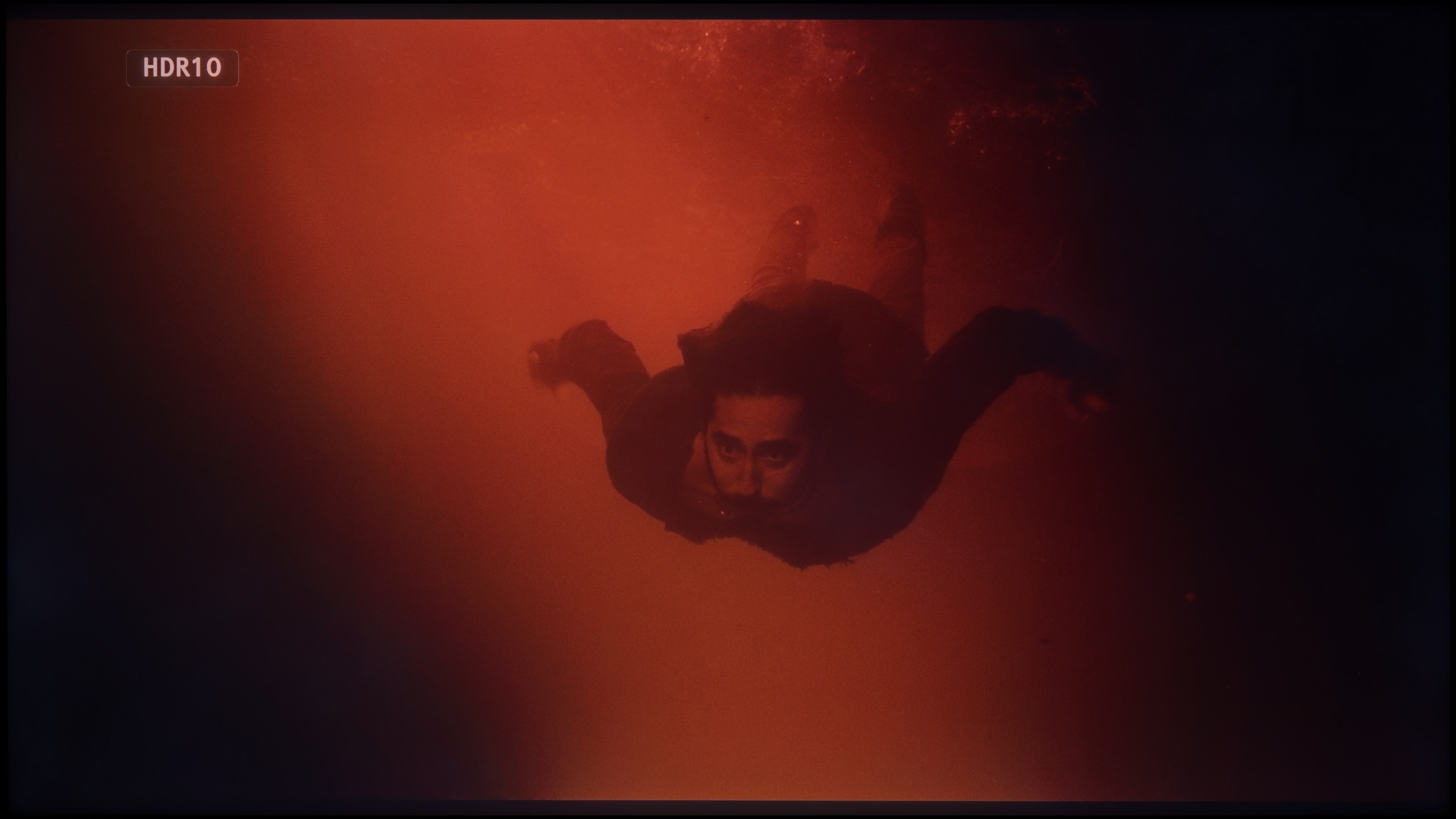




We must honestly admit that the smoothness of tonal transitions in this television is among the very best we have had the opportunity to test in 2024. Even in really demanding scenes, we hardly notice any noticeable "steps" between colors. Yes, with a keen eye, one can find minor shortcomings, but that is almost on a microscopic level. You really need to have a very "alert" eye to catch them. This, in turn, allows you to focus on the story and visual experiences while watching even the most complicated shots in a full range of colors, without the irritating, artificial effect of posterization.
Here we can confidently praise the Panasonic W85B. The television handles color blending and tonal transitions really remarkably. Gradients look smooth, without visible bands or artificial outlines. As a result, the image gains a natural quality, and sequences with a lot of subtle shades – like the sky or blurred backgrounds – look exceptionally good for this class of equipment.
Image scaling and smoothness of tonal transitions
6/10
6/10
Smooth transition function

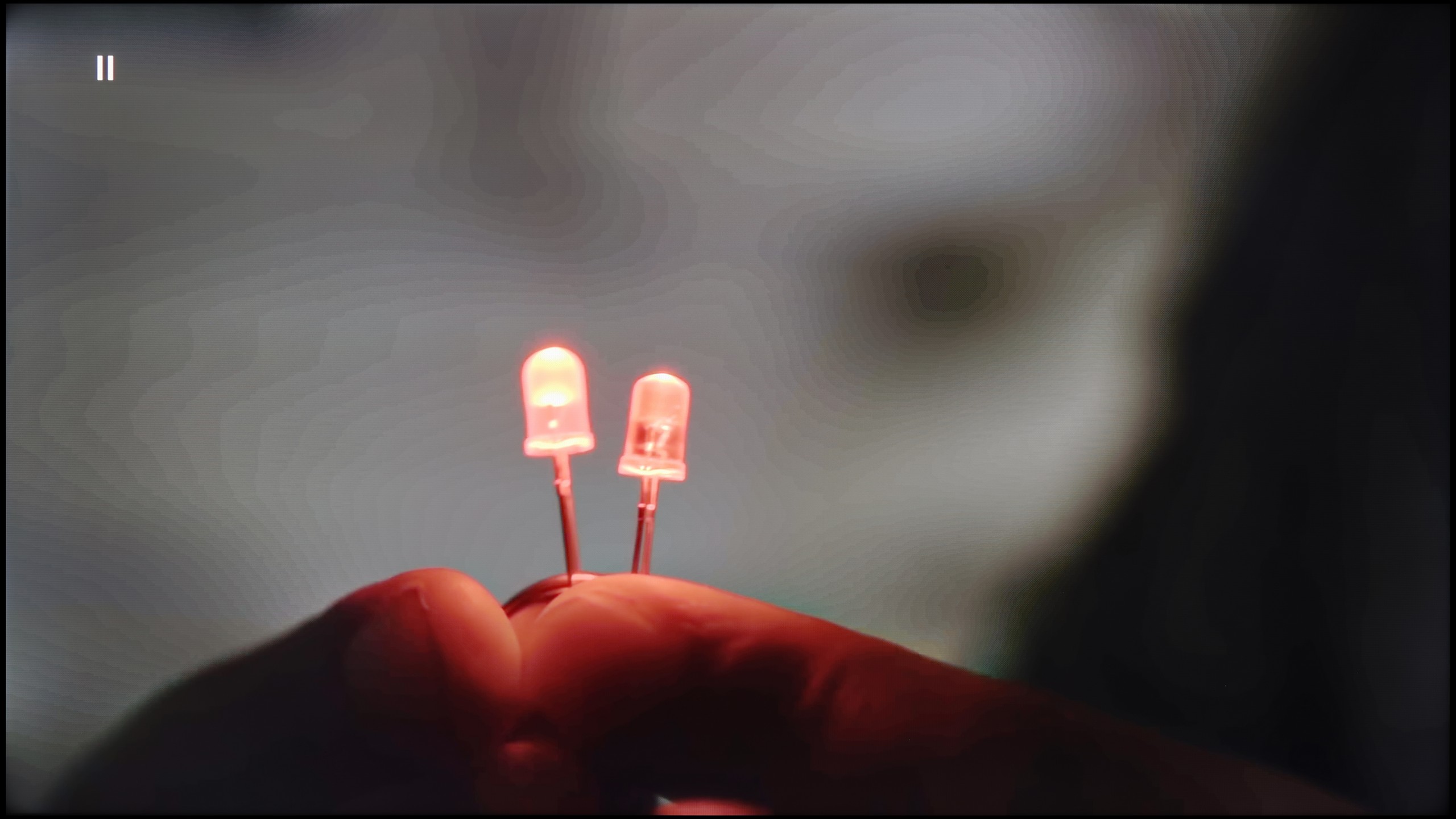
Image without overscan on the SD signal


Unfortunately, the "smooth and gradient image" feature in Hisense E7NQ PRO does not impress when it comes to smoothing tonal transitions in lower-quality materials. At the lowest setting, the change is hard to notice—it's more of a cosmetic improvement. Switching to "Medium" mode already provides a noticeable effect, but it still isn't anything special. In addition, the television starts to excessively interfere with other image elements, which can look unnatural.
Image scaling is also rather average. On the test screen, where a portrait of a model and text are displayed, slightly jagged edges can be seen, which makes the overall presentation less smooth and aesthetically pleasing than we would expect in this class of device. It's simply hard to speak of truly effective enhancement of lower resolution quality here.
With native SDR content, the Panasonic W85B performs very well – tonal transitions are smooth and natural, without artificial bands or clear contours. However, the situation looks worse with lower resolution materials. This is where the television has the biggest problem with "beautifying" the image. The lack of any option in the menu that would allow for improving gradation means that with older films or materials from YouTube, one can sometimes notice slight issues with color blending.
Fortunately, upscaling, or increasing the quality of lower resolution content, performs much better. This is definitely a strong point of this model – the image is scaled cleanly and in detail, and the television handles this better than one might expect from such an affordable device. This is thanks to the HCX processor, which Panasonic has been developing for years, and it shows that even in the lower series, it can do a good job.
Blur and motion smoothness
7/10
6.5/10

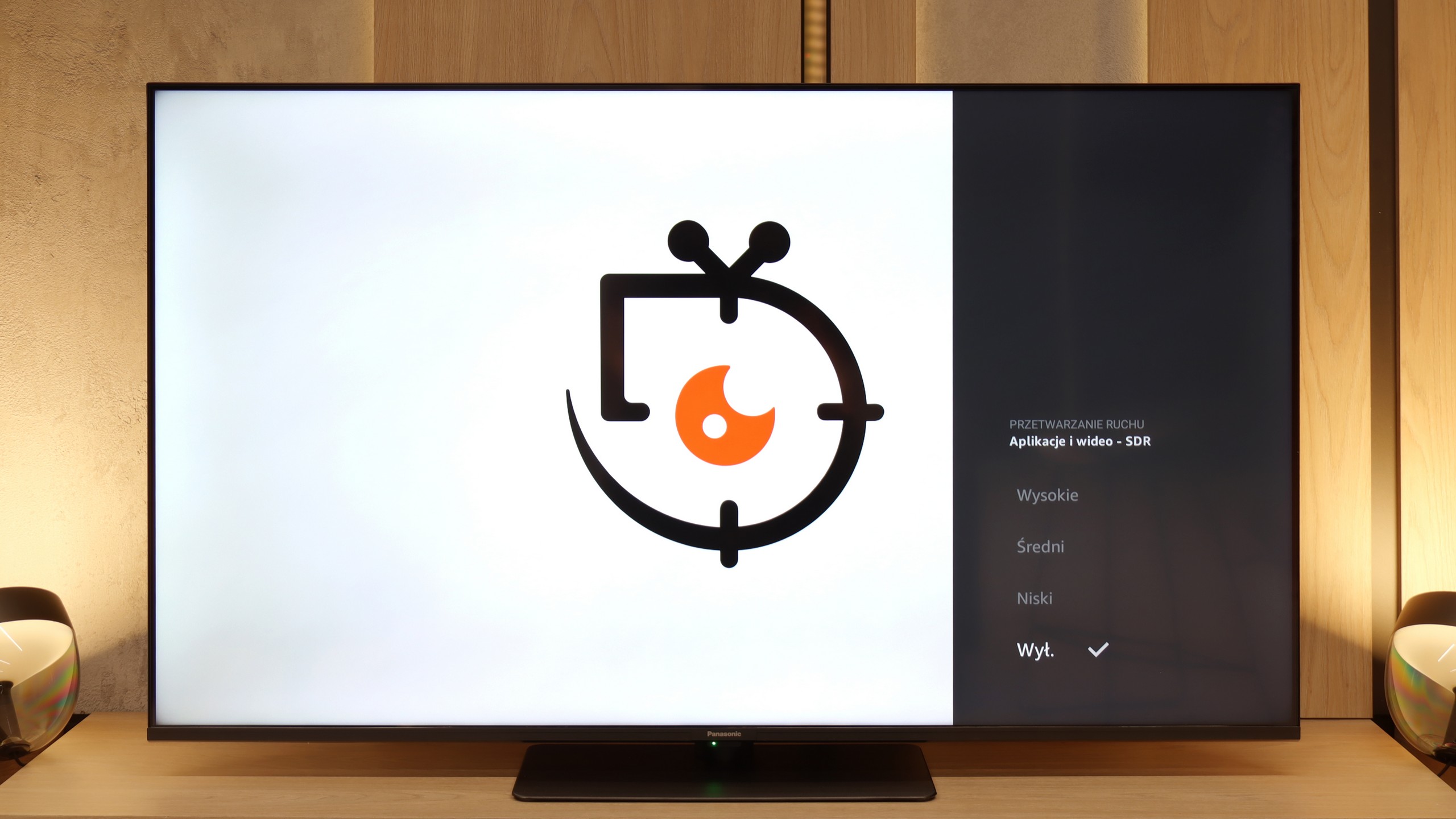
Blur (native resolution, maximum refresh rate):





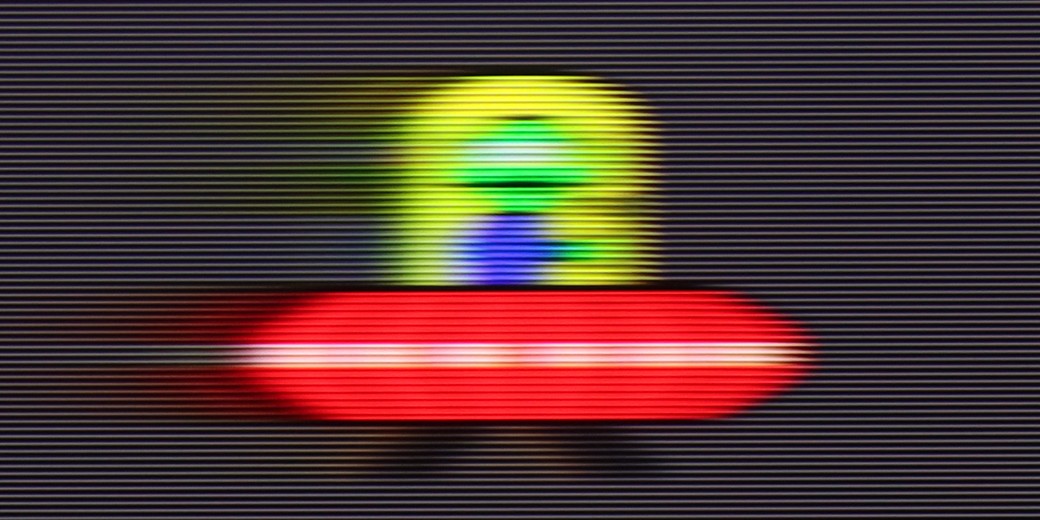
Blur ():
Blur (4K@144Hz):



Thanks to its 144 Hz panel, the E7NQ PRO performs excellently with almost every type of content. Whether we are watching fast-paced matches, dynamic games, or action movies, the fluidity of motion leaves a good impression. For movies, the manufacturer has equipped the TV with two key tools: "motion blur reduction" and "judder reduction." Each of these functions can be adjusted on a scale from 1 to 10.
At lower values, the processing is subtle, barely noticeable, and gently smooths motion without ruining the cinematic character of the image. The higher we move up the scale, the more clearly the TV intervenes in the presented material, smoothing motion more forcefully, thus minimizing any stutter or micro-cuts. On the other hand, the highest settings may resemble the so-called "soap opera effect," which makes the image look overly smooth, losing some of its cinematic atmosphere. However, with such a scale, we can find the golden mean, adjusting the fluidity of motion to our own preferences.
At first glance, everything looks good – the Panasonic W85B has a 120 Hz panel and even a 144 Hz mode, so it seems that it should handle smooth motion well. The problem begins when we look into the settings. The options for improving fluidity are supposedly present in the menu, but in practice… they change nothing. No matter what we choose, the image looks the same. On top of that, there's a lack of BFI, which is the black frame insertion mode that helps sharpen motion in many TVs. And suddenly, it turns out that despite having a strong panel, the W85B doesn't give us any real tools to adjust that motion to our needs. It only works well when the source itself operates at a higher frequency – for example, games at 120 Hz. But when it comes to movies or sports, we just have to take what the TV shows us, because there's nothing more we can do about it.
Console compatibility and gaming features
8.5/10
8.5/10
- ALLM
- VRR
- VRR range48 - 144Hz48 - 144Hz
- Dolby Vision Game Mode
- Correct implementation of HGIG
- 1080p@120Hz
- 1440p@120Hz
- 4K@120Hz
- Game bar

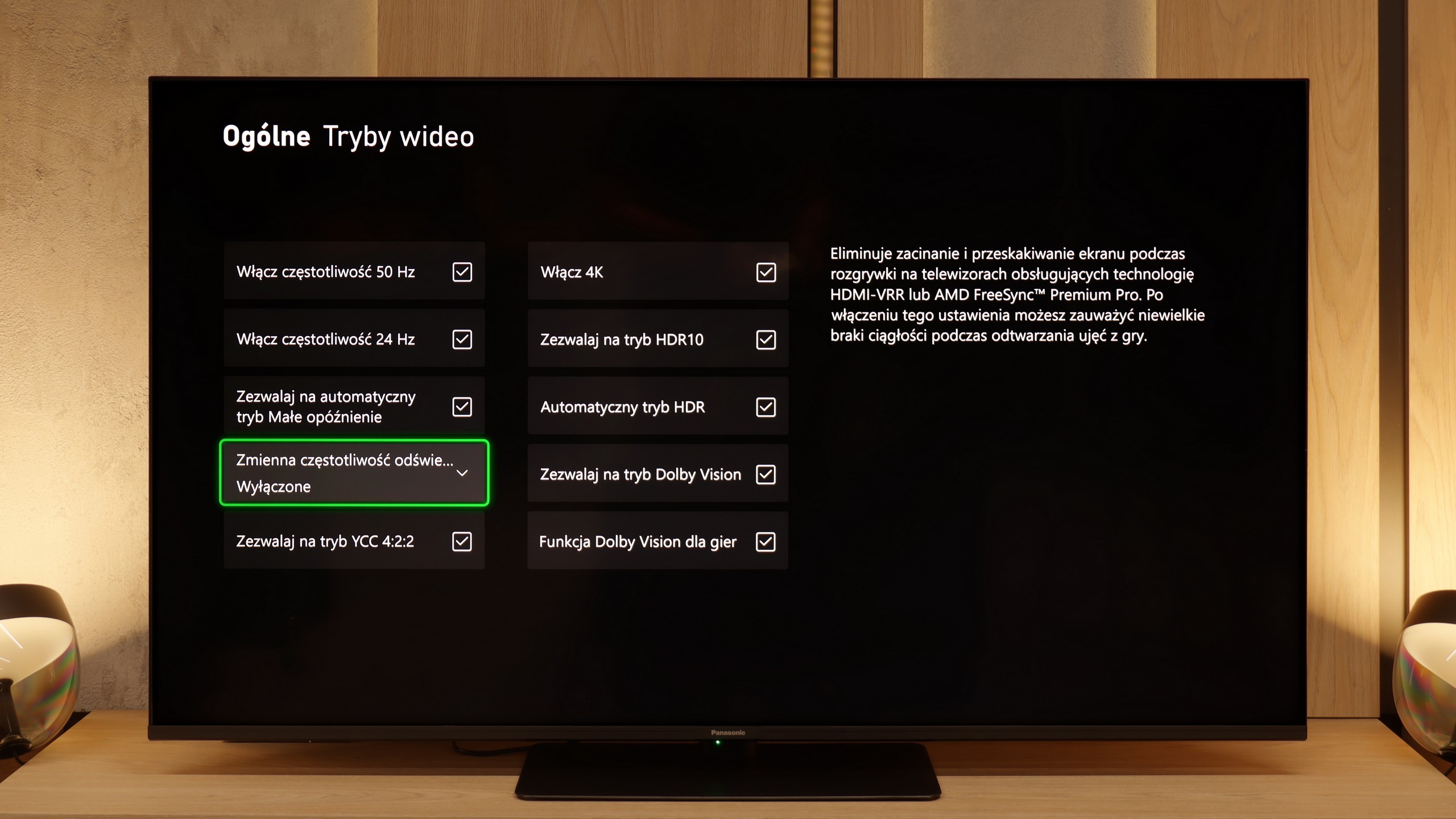

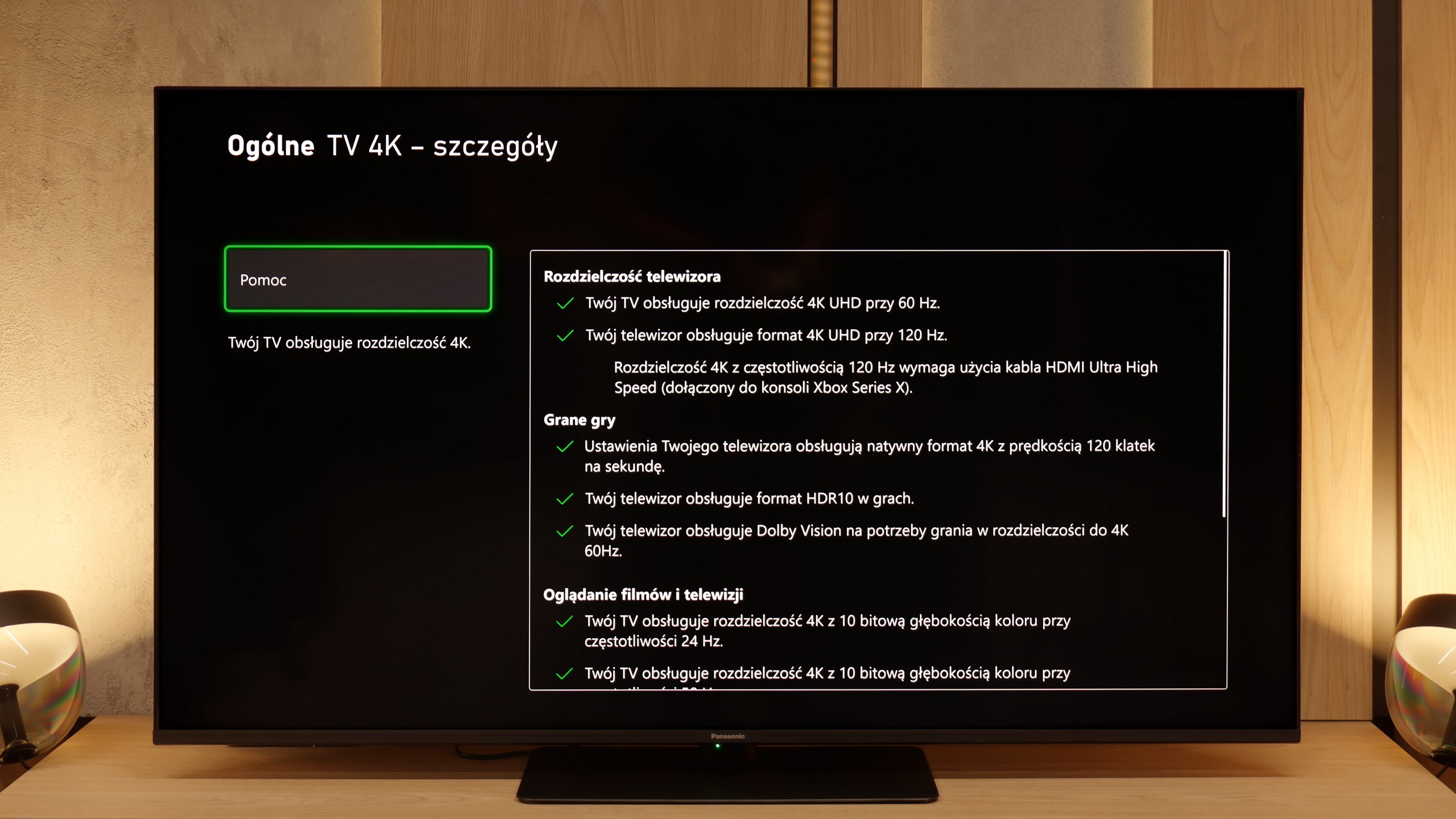

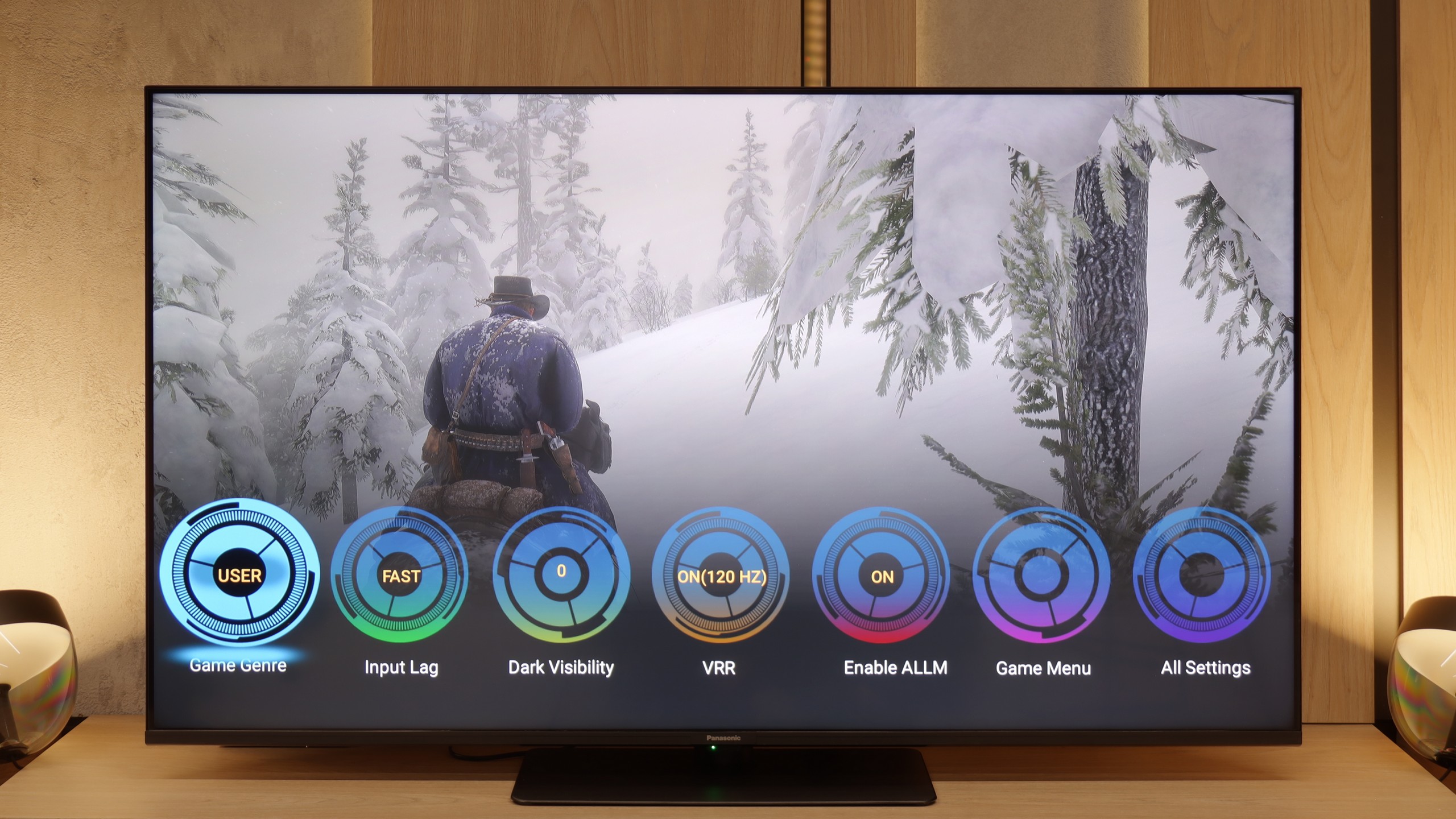

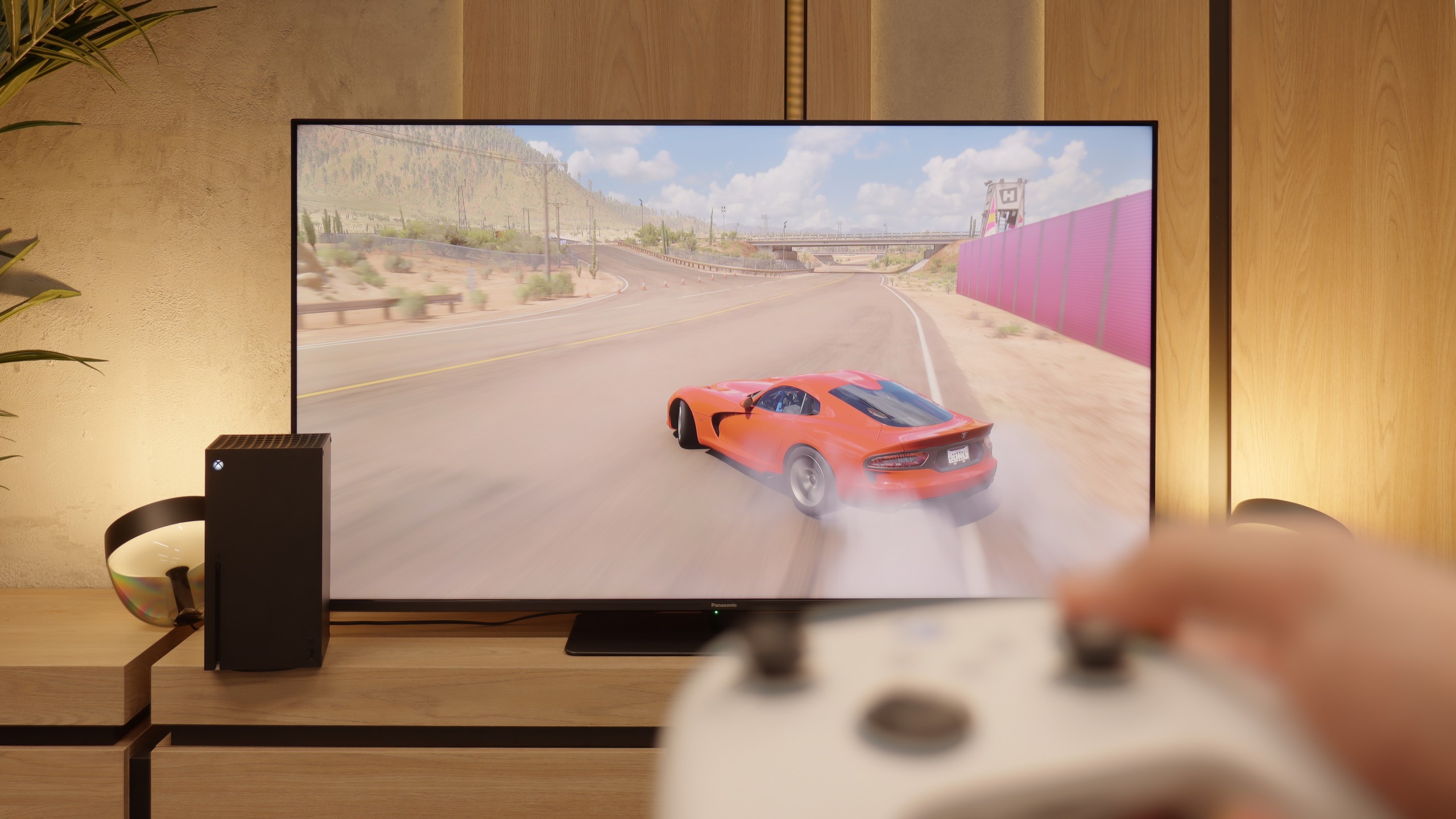
If you enjoy switching on your console and immersing yourself in games for hours, the E7NQ PRO is sure to make a strong impression. With its 144Hz refresh rate, gameplay feels impressively smooth, while support for HDMI 2.1 and VRR prevents screen tearing, even during the most action-packed moments. Additionally, ALLM automatically applies the lowest latency as soon as you switch to your console, so there’s no need to tweak the settings manually.
A major plus is the ability to play games in Dolby Vision, enhancing colours and contrast for a more vibrant experience. Hisense has also included a user-friendly game bar, allowing you to monitor key performance stats and adjust settings without leaving the game. The only real drawback is the absence of HGIG support. While not essential, some gamers may miss it if they’re looking for the most accurate representation of a game’s intended visuals. That said, in practice, the E7NQ PRO delivers an excellent gaming experience that’s smooth, responsive, and enjoyable.
On paper, the Panasonic W85B looks really solid. Here we have two full HDMI 2.1 ports, support for ALLM, variable refresh rate, Dolby Vision in games, and of course, a high refresh rate for the panel itself. Additionally, there’s the characteristic Panasonic game bar that allows you to check key parameters with one click and quickly change them if necessary. Sounds great, but the problem arises when we activate HDR. Here, the W85B significantly falters because it lacks proper HGiG implementation – the TV manages brightness poorly, and instead of faithful image rendering, we get scenes that are too bright, sometimes even blown out. The solution? The simplest – turn off HDR in the console settings and leave everything in SDR. And here it gets really interesting, because in this scenario, the W85B shows its better side. Low input lag, high smoothness thanks to 120 Hz – all of this makes gaming look phenomenal. Yes, HDR can be sacrificed, but if responsiveness and smooth gameplay are priorities, the W85B provides a lot of fun.
Input lag
9.9/10
9.8/10
SDR
HDR
Dolby Vision
In this regard, Hisense E7NQ PRO really delivers. At a frequency of 60 Hz, we measured about 15 ms, and at 120 Hz the lag drops even to 6 ms, allowing for very quick response and smooth control in games. It is also worth mentioning that even in Dolby Vision mode, input lag doesn't increase dramatically. This allows us to enjoy better image quality without having to sacrifice responsiveness, which will certainly please every avid gamer.
There is really nothing to be afraid of here. The Panasonic W85B reacts instantly to our movements, and the values measured in tests can easily compete with gaming monitors. With a 120 Hz signal, the input lag is around 8–10 ms, and at 60 Hz it hovers around 17–20 ms. In practice, this means one thing – no delays, no frustration! You press the button, and the action happens right away on the screen.
Compatibility with PC
7.6/10
8.6/10

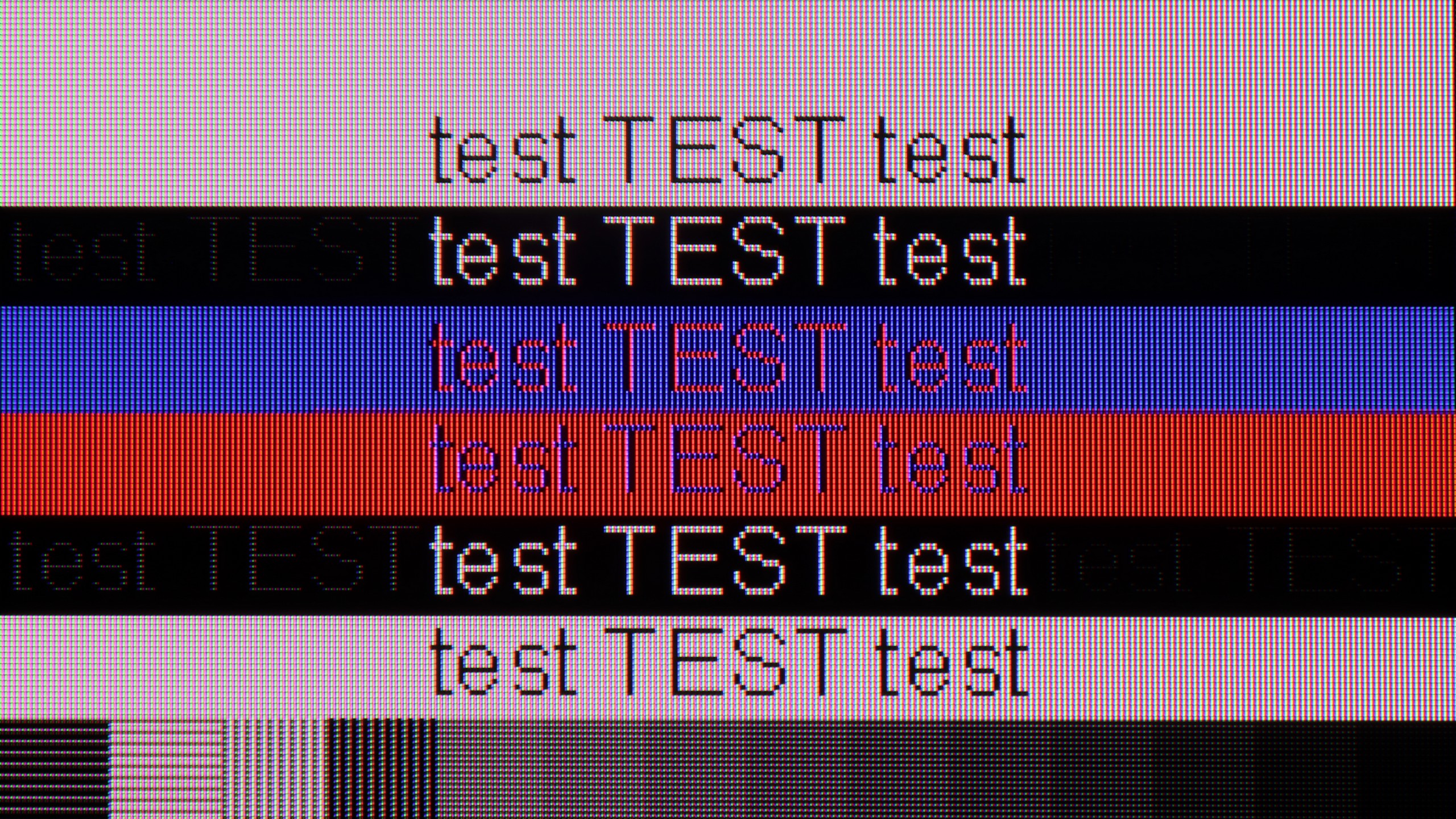
By connecting the E7NQ PRO to a computer, we will have no reason to complain. The overall readability of fonts is quite good, although with very thin, horizontal lines (the so-called "roofs" of letters) we noticed a slight dimming. This is not a big problem, but it's worth mentioning if we plan to spend long hours in text editors or browsers.
On the other hand, when it comes to gaming on PC, the TV shows its true claws. Support for G-Sync, connection with a 144 Hz panel, and low input lag make even the most demanding titles run smoothly and responsively. As a result, the screen works well not only with a console but also as a solid "window" to the world of PC entertainment.
The Panasonic W85B performs surprisingly well as a computer monitor. It's practically perfect for office work – the fonts are sharp and very readable thanks to full chroma 4:4:4 support, so it's easy to type, browse the web, or work on spreadsheets. But the real "fun" starts with gaming. The TV easily handles refresh rates up to 144 Hz for PC, and it also supports popular image synchronization technologies like NVIDIA G-Sync and AMD FreeSync. Because of this, we don't have to worry about screen tearing or micro-stutters – the gameplay is smooth and simply looks great.
Viewing angles
6.5/10
3.2/10
In the case of Hisense E7NQ PRO, viewing angles are definitely a strong point, thanks to the IPS panel. This means that when we look at the screen even from a significant angle, colours and brightness do not "shift" as much as in TVs with a VA panel. Of course, compared to OLED or QD-OLED screens, where the image remains practically unchanged from any side, IPS still appears modest. Nevertheless, among LCD televisions, it is hard to find a solution that guarantees equally good viewing angles as those offered by IPS. Unfortunately, everything comes at a cost – in this case, one has to live with average black levels and lower contrast.
Here you can see the biggest price we pay for the high quality of the VA matrix contrast. The W85B, like most TVs with this type of panel, does not perform well when viewing from a greater angle. Colors lose intensity and the image begins to fade as soon as we move away from the screen's axis. This is not a flaw of Panasonic itself, but rather a feature of VA technology – great contrast in exchange for weaker viewing angles. So if you plan to watch movies with a larger group and often sit "to the side," keep this in mind.
Daytime performance
6.2/10
4.2/10

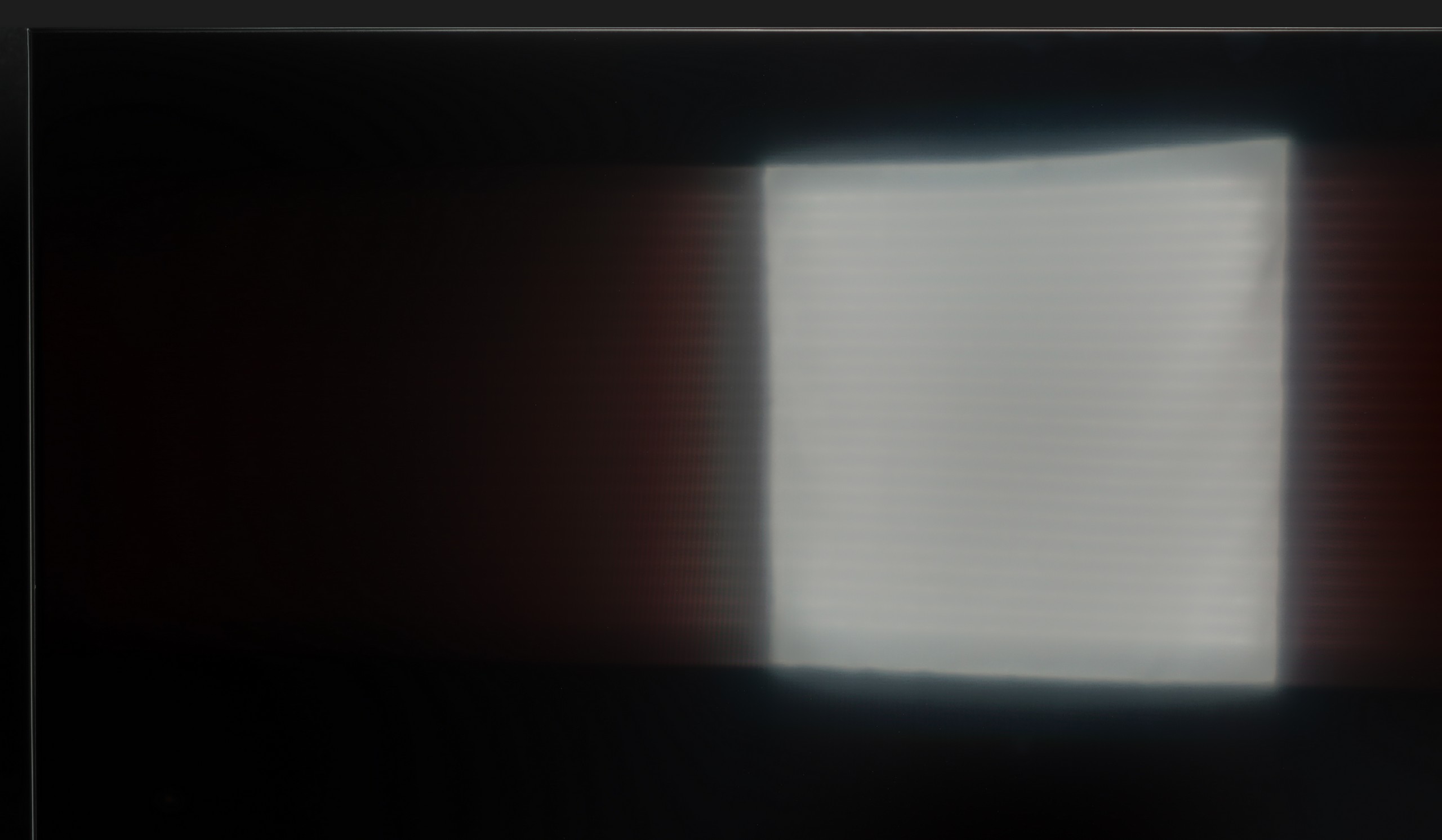


Panel brightness
Average luminance SDR
Panasonic W85: 263 cd/m2
Hisense E7NQ PRO: 478 cd/m2
On a bright day, E7NQ PRO performs quite well. The "satin" matrix diffuses light well, which prevents reflections and glare from turning into distracting "spots" on the screen. With an average brightness of around 500 cd/m², it is possible to watch television in a sunlit room without much struggle to see details or clear content. While it may not be at the level of the highest premium models, it still proves to be quite decent in everyday use.
The Panasonic W85B has a satin finish panel that handles glare reduction and color retention quite well, even in bright light coming from windows or lamps. There is no "mirror" effect here, so watching television in a typical living room during the day is comfortable. However, the problem arises when we encounter really bright rooms – the TV does not have high brightness, so it won't cut through very strong sunlight. It's simply a screen that performs best in controlled conditions.
Panel details
Subpixel Structure:

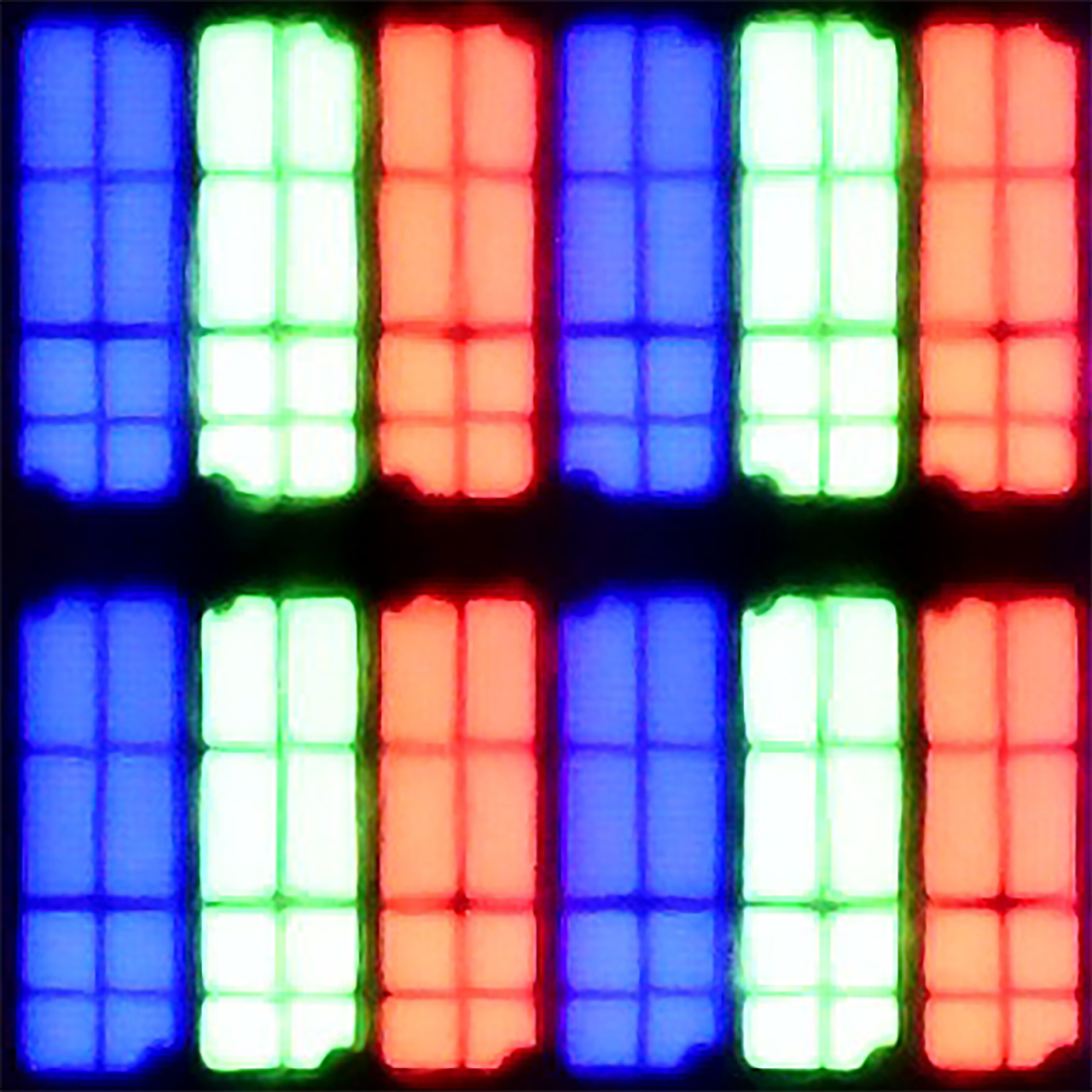
Panel uniformity and thermal imaging:

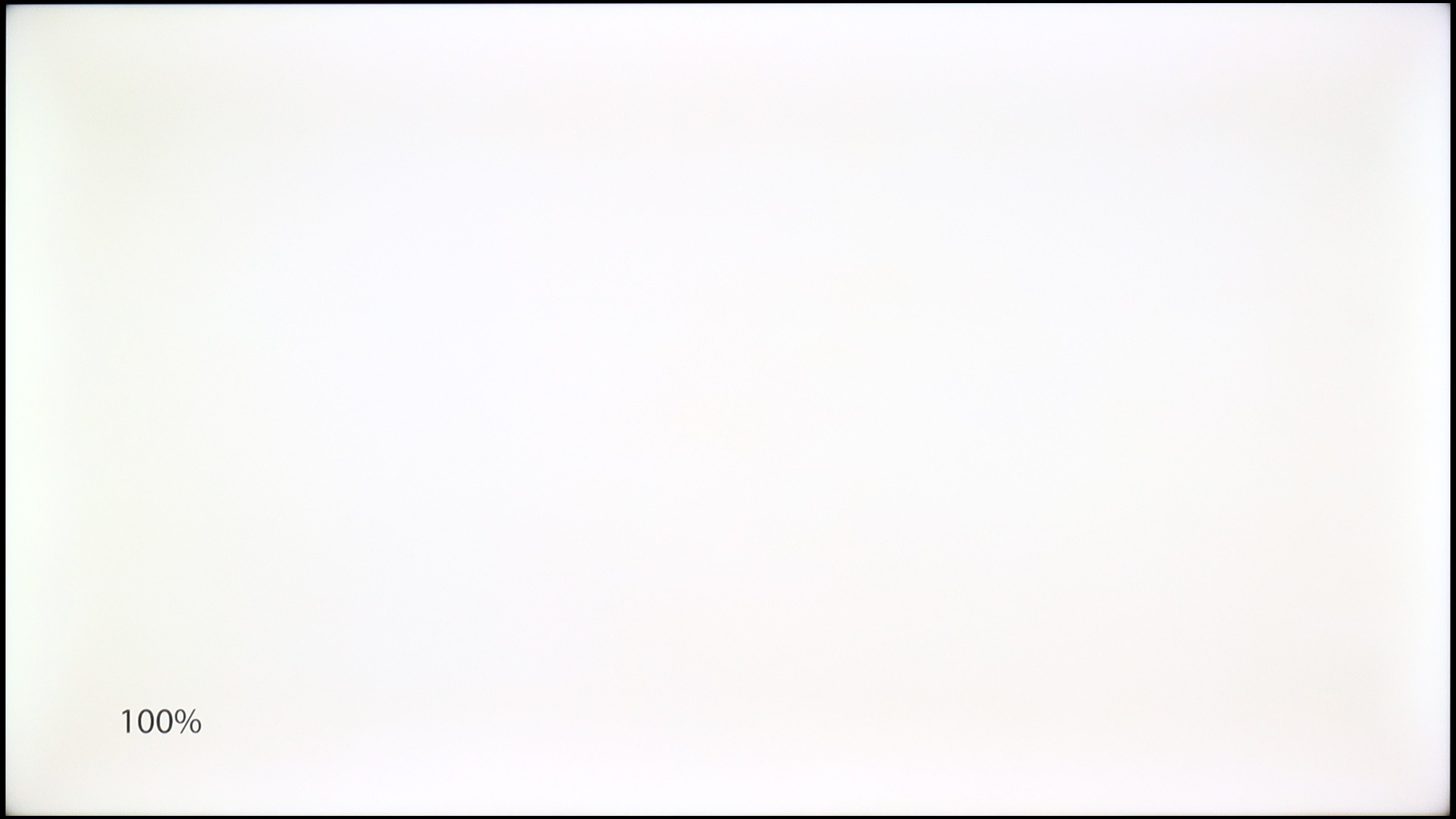
Hisense E7NQ PRO
Panasonic W85
TV features
8.9/10
6.8/10
- HDMI inputs2 x HDMI 2.0, 2 x HDMI 2.1 48Gbps1 x HDMI 2.0, 2 x HDMI 2.1 48Gbps
- Other inputsRCA (Chinch)
- OutputsToslink (Optical audio), eARC (HDMI), ARC (HDMI), Mini-Jack (Headphones)Toslink (Optical audio), eARC (HDMI), ARC (HDMI), Mini-Jack (Headphones)
- Network InterfacesWi-Fi 2.4GHz, Wi-Fi 5GHz, Ethernet (LAN) 100MbpsWi-Fi 2.4GHz, Wi-Fi 5GHz, Ethernet (LAN) 100Mbps
- TV receptionDVB-T, DVB-T2, DVB-S, DVB-S2, DVB-CDVB-T, DVB-T2, DVB-S, DVB-S2
Classic features:
- Recording to USB (terrestrial TV)
- Recording programming
- Picture in Picture (PiP)
- RF remote control (no need to aim at the screen)
- Backlit remote control
- Teletext
- Audio only mode
- Bluetooth headphones support
- Simultaneous Bluetooth headphones & TV audio
Smart features:
- AirPlay
- Screen mirroring (Windows Miracast)
- Voice search
- Voice search in native language
- Ability to connect a keyboard and mouse


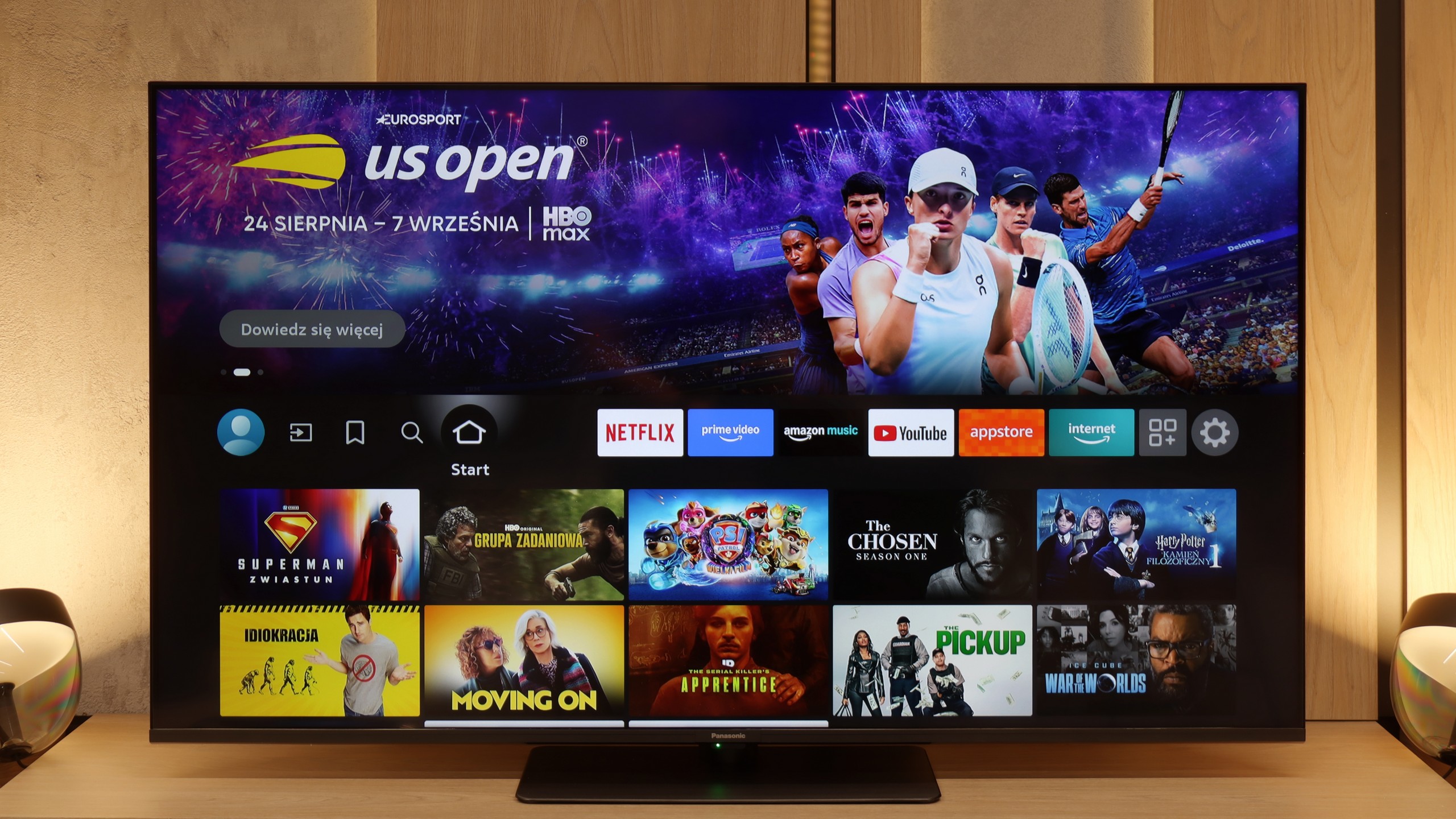
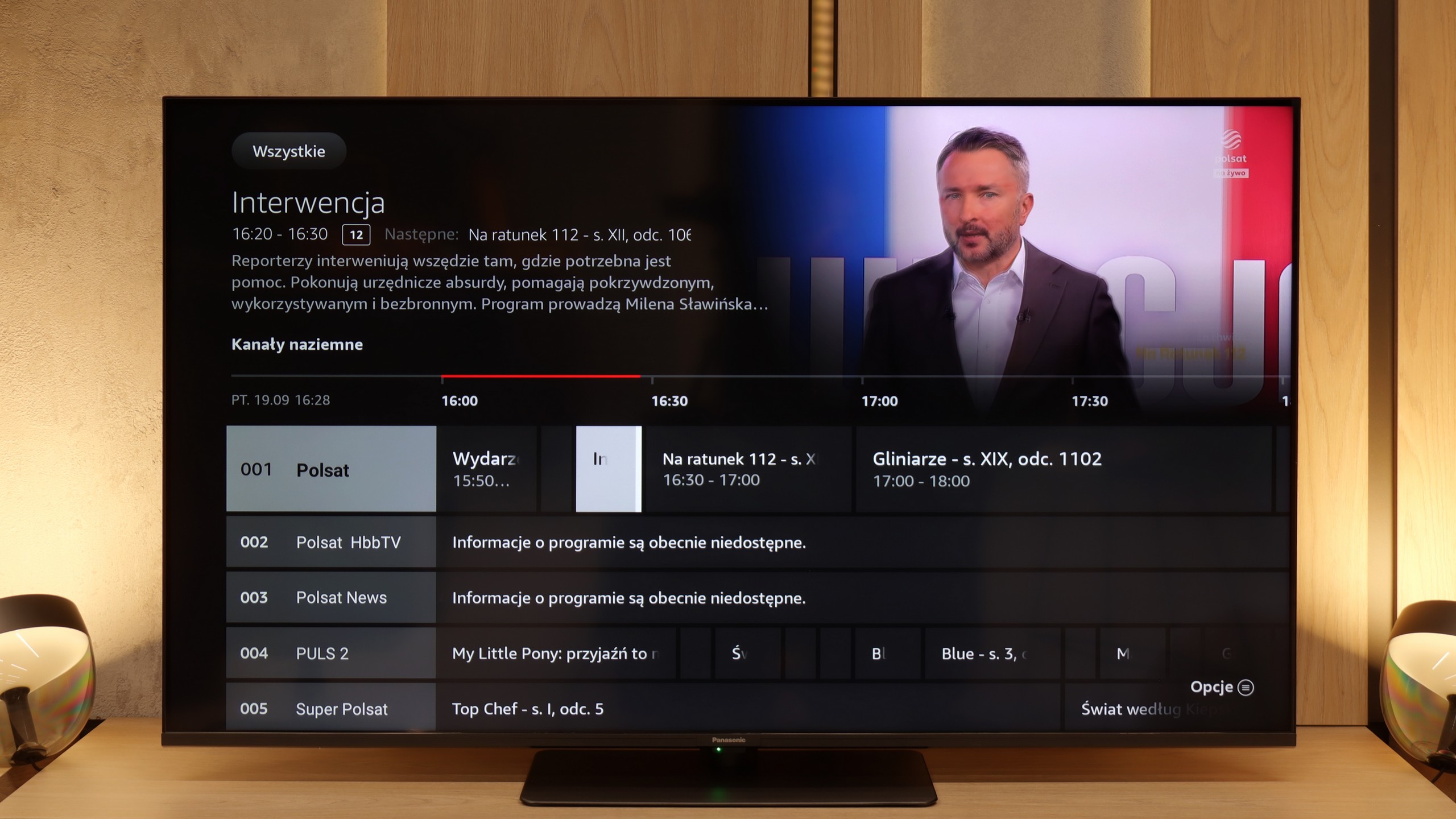
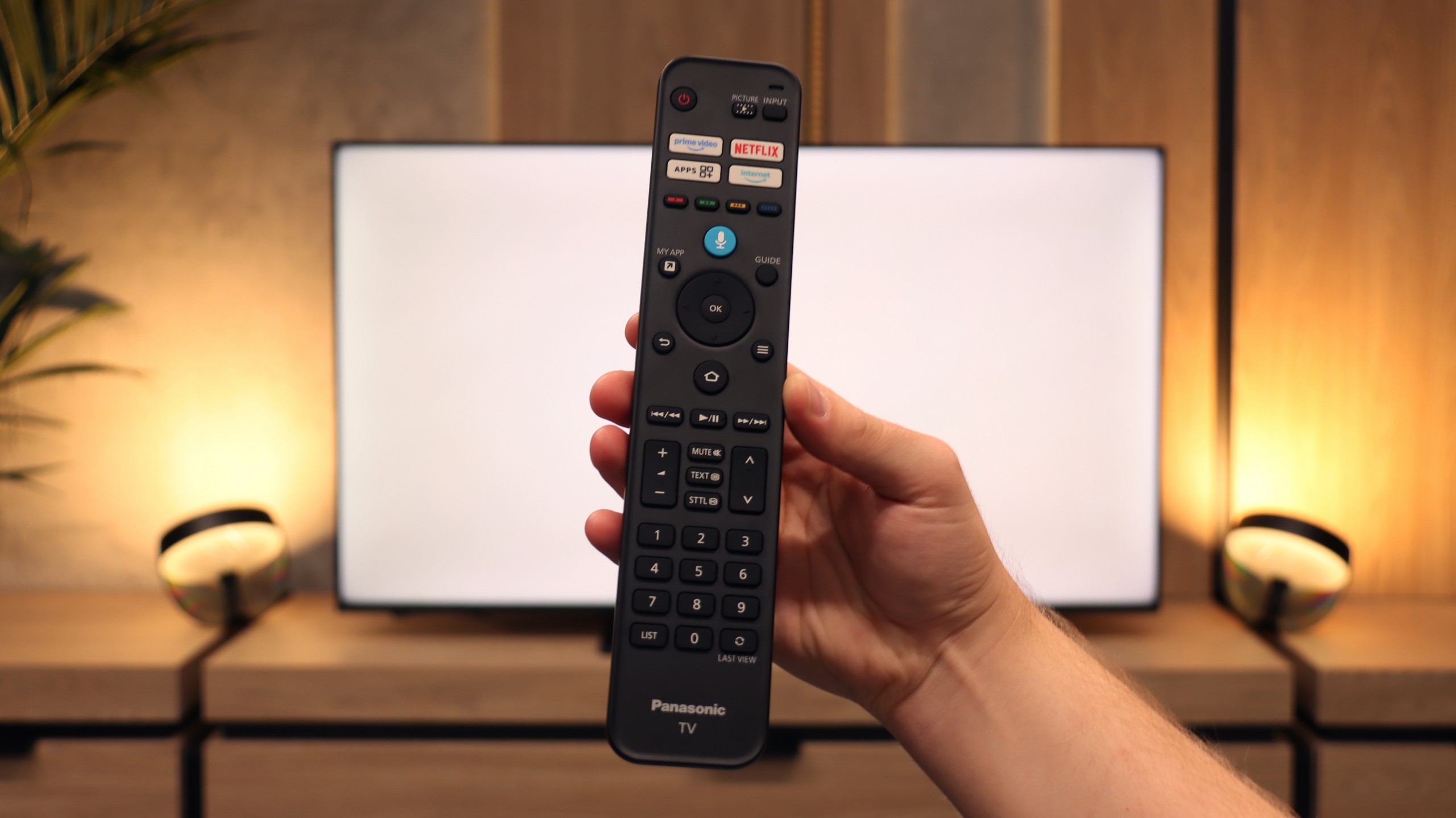
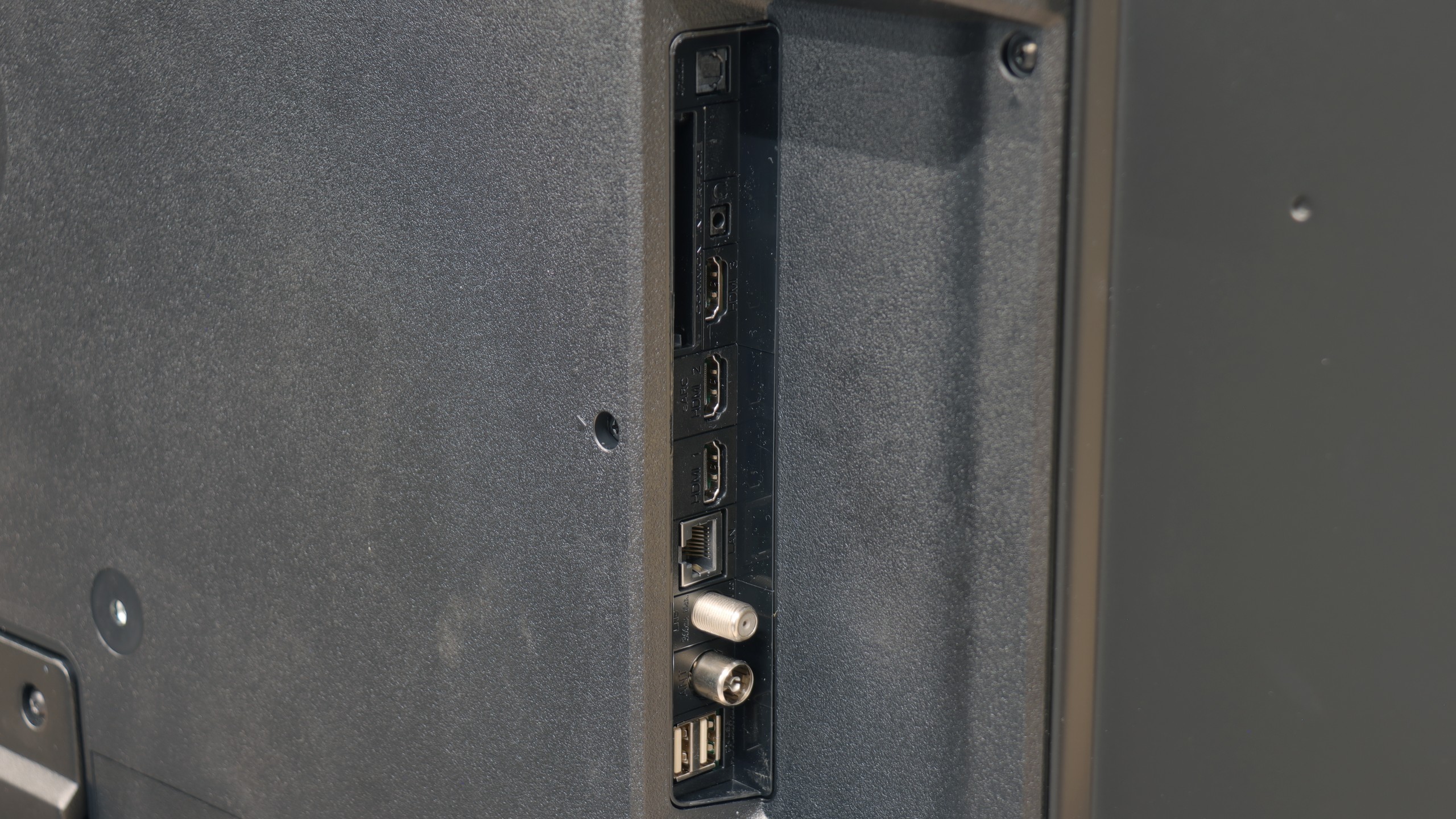
Hisense E7NQ PRO operates based on the VIDAA system, which has recently made significant progress. Here we find most popular applications, although, some music platforms, such as Spotify and Tidal, are missing. Nevertheless, navigating the menu is quite pleasant, and responsiveness is satisfactory. Yes, there are occasional minor "stutters," but not something that will overwhelm our daily usage experience.
On the positive side, we can count on the support for voice search, which makes it easier to find your favourite content without the tedious task of typing letter by letter. The TV also offers a lot of additional options: we can record programs, use AirPlay and mirroring, and also enjoy extensive wireless connectivity options (Wi-Fi and Bluetooth). It may lack a backlit remote or Picture-in-Picture (PiP) mode, but these are rather niche functions, so few people will truly feel their absence. In everyday use, we simply have a solid base of useful tools and convenient solutions.
SmartTV: FireTV
The W85B runs on the Fire TV system and it must be admitted – this is a significant step forward compared to Panasonic's previous proprietary solutions. Here we have support for AirPlay, screen mirroring, and even voice control through Alexa. It sounds modern and in practice it actually offers quite a few possibilities. The problem is that in Europe, Fire TV still looks a bit like a "guest with luggage." It works decently, but there are occasional micro-stutters, the interface doesn’t always respond as smoothly as we would like, and you may encounter awkward translations in the menu. It’s not yet on the level of the major players like Google TV or even Tizen, but it is still an improvement over what Panasonic had before. However, the worst part of it all is that the Fire TV app library is quite modest and that is its biggest drawback.
Classic TV Features
In terms of classic television functionalities, it's quite good – we have a classic remote control with a full numeric keypad, a clear EPG guide, and the ability to record programs from the built-in tuner to an external USB drive (e.g., a flash drive). A downside is the lack of options to schedule recordings in advance – you can record "here and now," but you can't set recordings for later.
Playing files from USB
5.2/10
3.1/10
Supported photo formats:
Maximum photo resolution:

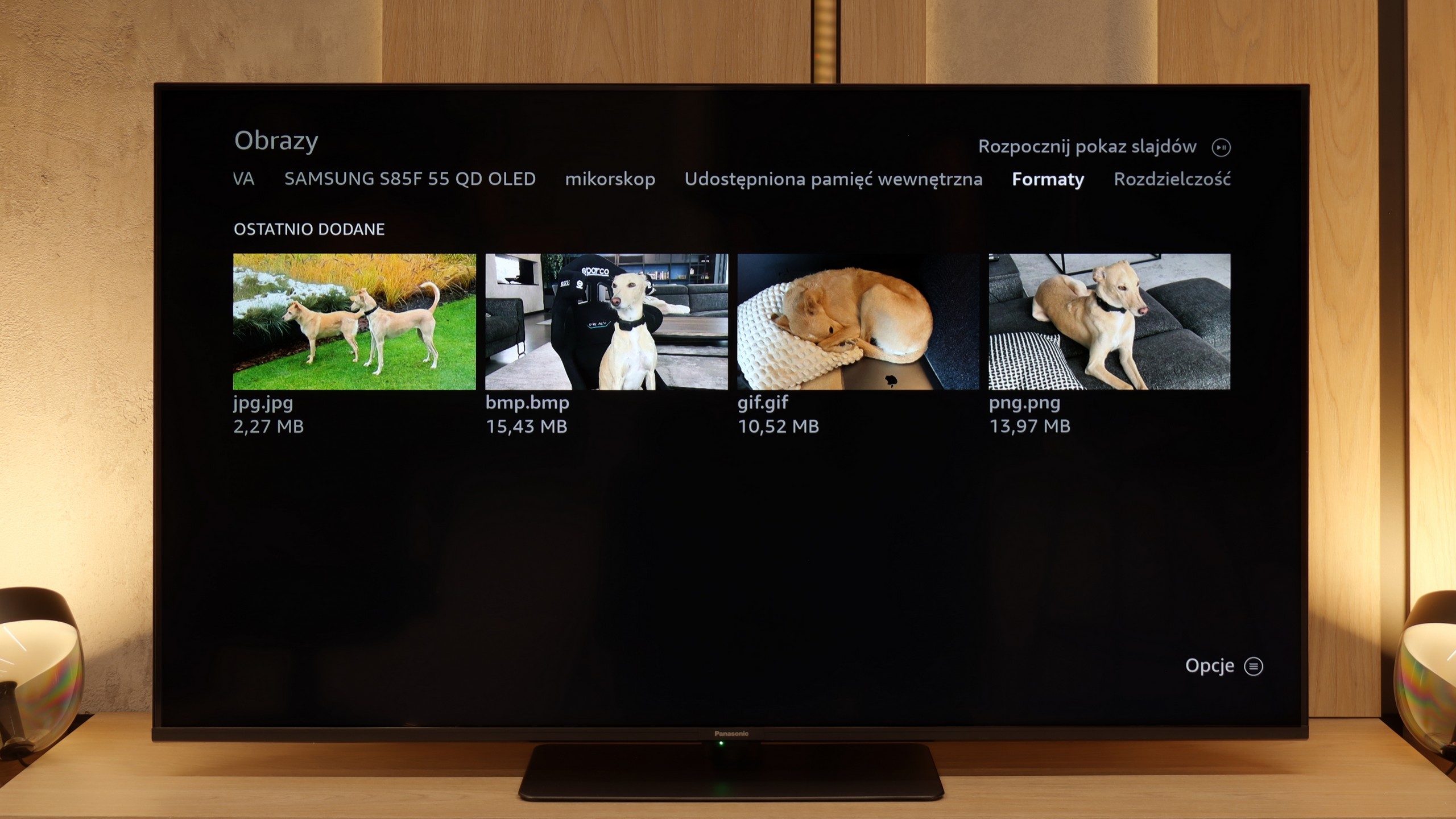
If you are counting on comfortable movie watching with subtitles straight from a pendrive, you may, unfortunately, be disappointed. Just like with the previously tested A7NQ, here we encounter a rather peculiar situation: the television does not display subtitles, even if we correctly load them onto the device and try various formats. Paradoxically, we find options to change the colour and appearance of the font, but as they say – what’s the point if we still can’t see anything?
In the case of other files, such as photos or music, the E7NQ PRO manages just fine, playing the most popular formats without a hitch. Unfortunately, for those who would like to use the television as a multimedia player, the lack of working subtitles is quite a major inconvenience.
The biggest problem with the built-in player on Fire TV is the lack of support for external subtitle files. If you have your own movie library and use text files, you simply won't be able to display them on this TV. The player itself handles basic video formats, but if someone wanted to fully utilize files from USB, they would likely end up installing an additional app from the store (e.g., VLC).
Apps
7.7/10
7.6/10














































Sound
7/10
5.8/10
- Maximum volume-87dB
- Dolby Digital Plus 7.1
- Dolby True HD 7.1
- Dolby Atmos in Dolby Digital Plus (JOC)
- Dolby Atmos in Dolby True HD
- DTS:X in DTS-HD MA
- DTS-HD Master Audio
When it comes to the built-in speakers, Hisense E7NQ PRO pleasantly surprised us. Of course, it's not on the level of a decent soundbar or home theatre system, but it performs quite well in everyday conditions. During our tests, dialogues remained clear, and the sound was sufficiently clean and spacious that there was no immediate need to invest in additional speakers.
It's also worth mentioning the support for many audio formats – from Dolby Atmos to the less common DTS:X. This means that if we come across suitable source materials, we can expect a more immersive and spatial experience. Although in terms of sound it still mainly serves as a decent base, Hisense E7NQ PRO should satisfy most users who want to turn on the TV and hear clear, unbothered sound.
Here, the Panasonic W85B unfortunately has nothing to brag about. The speakers sound flat and rather "plastic," so cinematic experiences are definitely not to be had here. There is no depth, no clear bass – just basic sound that merely "exists." It's a shame because we thought the external subwoofer used here would actually make a difference. Unfortunately, we were mistaken. The only advantage is that the television can play really loudly. This might appeal to older users who often need higher volume to comfortably watch programs or news. For everyday TV viewing, it’s enough, but if someone is thinking about movies and gaming – an additional soundbar or audio system is essentially a must.
Sound Quality Test
No sound test video
Acoustic Measurements
No acoustic data
87dBC (Max)
75dBC
